Elastic Wave Measurement Using a MEMS AE Sensor
Abstract
:1. Introduction
2. Basic Structure of the SA Sensor
Fabricaiton Process and Mechanism of Sensing
3. Pencil Lead Break Tests
3.1. Pencil Lead Break Specification
3.2. Experimental Setup
4. Pencil Lead Break Results
5. Time Difference and Source Location
6. Discussion
7. Conclusions
Acknowledgments
Author Contributions
Conflicts of Interest
References
- Shiotani, T.; Osawa, S.; Momoki, S.; Ohtsu, H. Visualization of Damage in RC Bridge Deck for Bullet Trains with AE Tomography, Advances in Acoustic Emission Technology. In Springer Proceedings in Physics; Springer: New York, NY, USA, 2015; Volume 158. [Google Scholar]
- Nishida, T.; Shiotani, T.; Asaue, H.; Maejima, T.; Kobayashi, Y. Damage Evaluation of RC Bridge Deck under Wheel Loading Test by Means of AE. Tomography. In Proceedings of the 8th International Conference on Acoustic Emission, Kyoto, Japan, 5–9 December 2016; pp. 111–116. [Google Scholar]
- Pham, Q.K.; Nguyen, M.D.; Nguyen, B.K.; Phan, H.P.; Matsumoto, K.; Isao, S. Multi-axis force sensor with dynamic range up to ultrasonic. In Proceedings of the IEEE MEMS, San Francisco, CA, USA, 26–30 January 2014; pp. 474–482. [Google Scholar]
- Kaneko, T.; Nguyen, M.D.; Pham, Q.K.; Takei, Y.; Takahata, T.; Matsumoto, K.; Shimoyama, I. Pulse wave measurement in human using piezoresistive cantilever on liquid. In Proceedings of the IEEE MEMS, Estoril, Portugal, 18–22 January 2015; pp. 2083–2092. [Google Scholar]
- Pham, Q.K.; Nguyen, M.D.; Matsumoto, K.; Shimoyama, I. Acoustic Emission Sensor using Liquid-on-Beam Structure. In Proceedings of the IEEE Transducers, Anchorage, Alaska, 21–25 June 2015; pp. 1137–1139. [Google Scholar]
- Ozevin, D.; Greve, D.W.; Oppenheim, I.J.; Pessiki, S.P. Resonant capacitive MEMS acoustic emission transducers. Smart Mater. Struct. 2006, 15, 1863. [Google Scholar] [CrossRef]
- Saboonchi, H.; Ozevin, D. In-Plane MEMS Acoustic Emission Sensors Development and Experimental Characterization. MEMS Nanotechnol. 2014, 5, 81–87. [Google Scholar]
- Greve, D.W.; Oppenheim, I.J.; Wu, W.; Wright, A.P. Development of a MEMS acoustic emission sensor system. Proc. SPIE 2007, 6529, 652912. [Google Scholar]
- Oppenheim, I.J.; Jain, A.; Greve, D.W. Electrical Characterization of Coupled and Uncoupled MEMS Ultrasonic Transducers. IEEE Trans. Ultrason. Ferroelectr. Freq. Control 2003, 50, 297–304. [Google Scholar] [CrossRef] [PubMed]
- Oppenheim, I.J.; Jain, A.; Greve, D.W. MEMS Ultrasonic Transducers for the Testing of Solids. IEEE Trans. Ultrason. Ferroelectr. Freq. Control 2003, 50, 305–311. [Google Scholar] [CrossRef] [PubMed]
- Pickwell, A.J.; Dorey, R.A.; Mba, D. Development of a Thick Film PZT Foil Sensor for Use in Structural health Monitoring Applications. IEEE Trans. Ultrason. Ferroelectr. Freq. Control 2013, 60, 373–379. [Google Scholar] [CrossRef] [PubMed]
- Feng, G.H.; Tsai, M.Y. Acoustic emission sensor with structure-enhanced sensing mechanism based on micro-embossed piezoelectric polymer. Sens. Actuators A 2010, 162, 100–106. [Google Scholar] [CrossRef]
- Khir, M.H.M.; Qu, P.; Qu, H. A Low-Cost CMOS-MEMS Piezoresistive Accelerometer with Large Proof Mass. Sensors 2011, 11, 7892–7907. [Google Scholar] [CrossRef] [PubMed]
- Takahashi, H.; Nguyen, M.D.; Matsumoto, K.; Shimoyama, I. Differential pressure sensor using a piezoresistive cantilever. J. Micromech. Microeng. 2012, 22, 055015. [Google Scholar] [CrossRef]
- Omori, T.; Usui, T.; Watabe, K.; Nguyen, M.D.; Matsumoto, K.; Shimoyama, I. Elastic Wave Measurement using a MEMS AE Sensor. In Proceedings of the 8th International Conference on Acoustic Emission, Kyoto, Japan, 5–9 December 2016; pp. 339–344. [Google Scholar]
- Nguyen, M.D.; Pham, Q.K.; Matsumoto, K.; Shimoyama, I. MEMS Based Acoustic Emission sensor. In Proceedings of the AEWG-58, Philadelphia, PA, USA, 22–25 May 2016. [Google Scholar]
- Standard Guide for Determining the Reproducibility of Acoustic Emission Sensor Response; ASTM E976-10; American Society for Testing and Materials: Philadelphia, PA, USA, 2010.
- Hamstad, M.A. Acoustic Emission Signals Generated by monopole (Pencil-Lead Break) versus Dipole Sources: Finite Element modeling and Experiments. J. Acoust. Emiss. 2007, 25, 92–106. [Google Scholar]
- Matsuda, N.; Nguyen, M.D.; Takahata, T.; Shimoyama, I. A multi-axis piezoresistive MEMS sensor for acoustic emission. In Proceedings of the IEEE MEMS, Las Vegas, NV, USA, 22–26 January 2017; pp. 1181–1183. [Google Scholar]
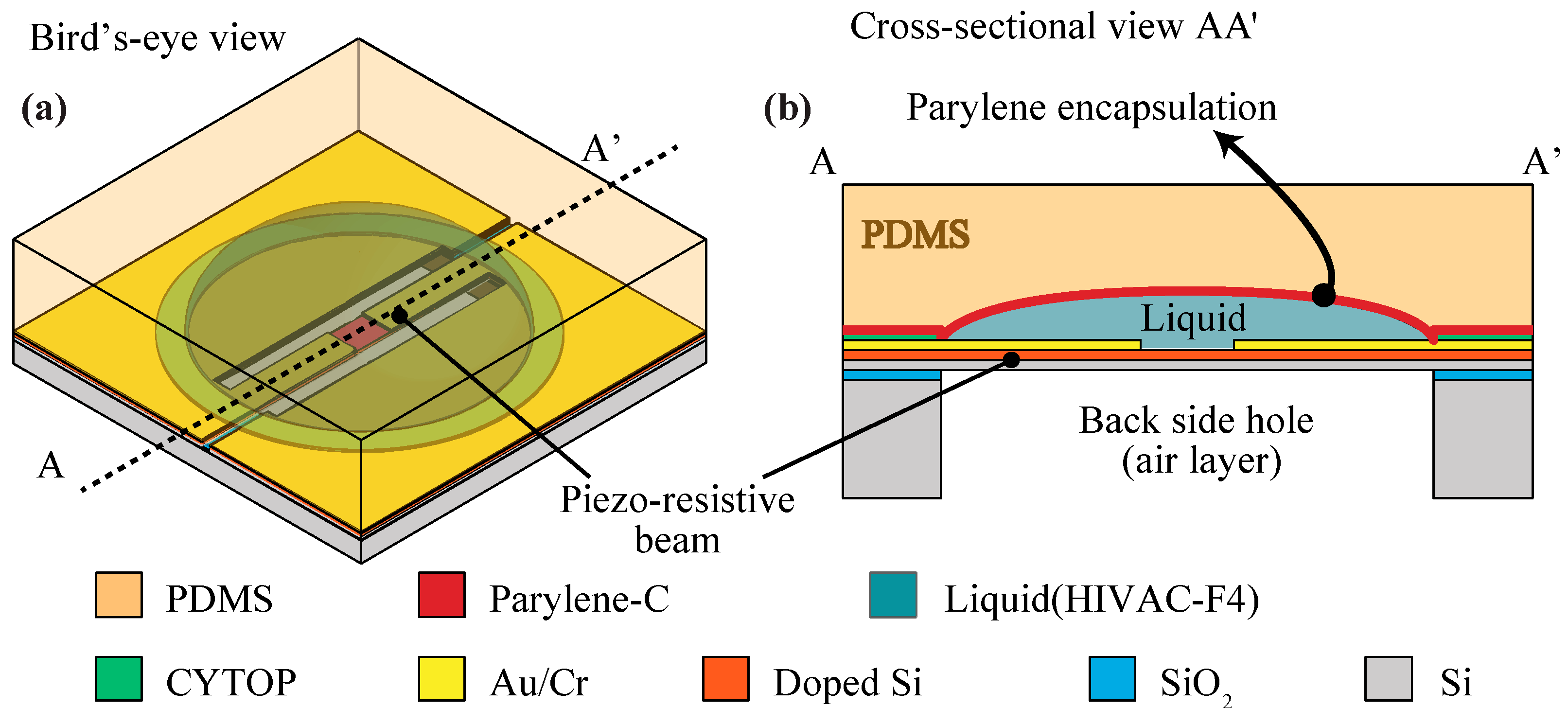

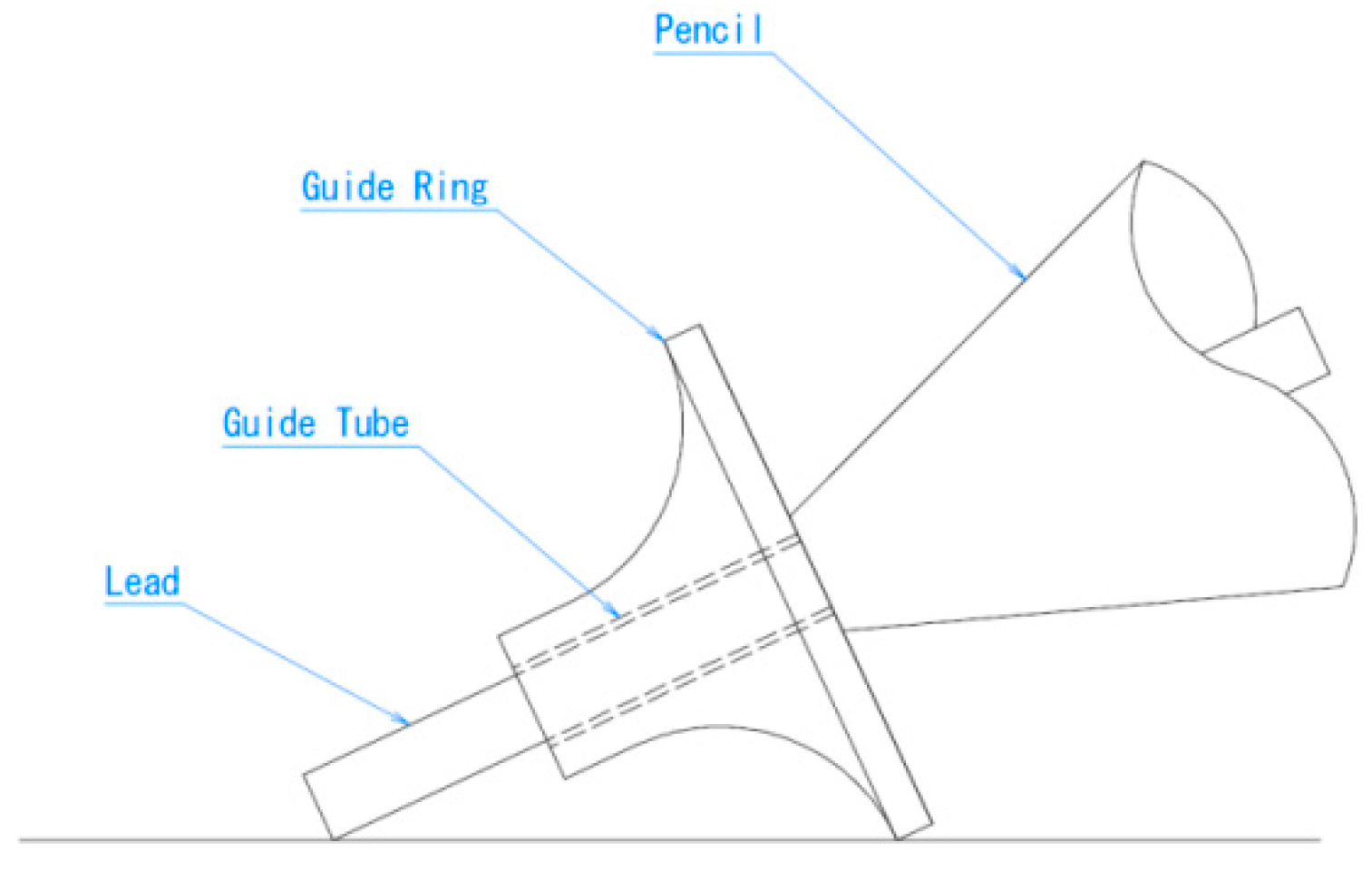
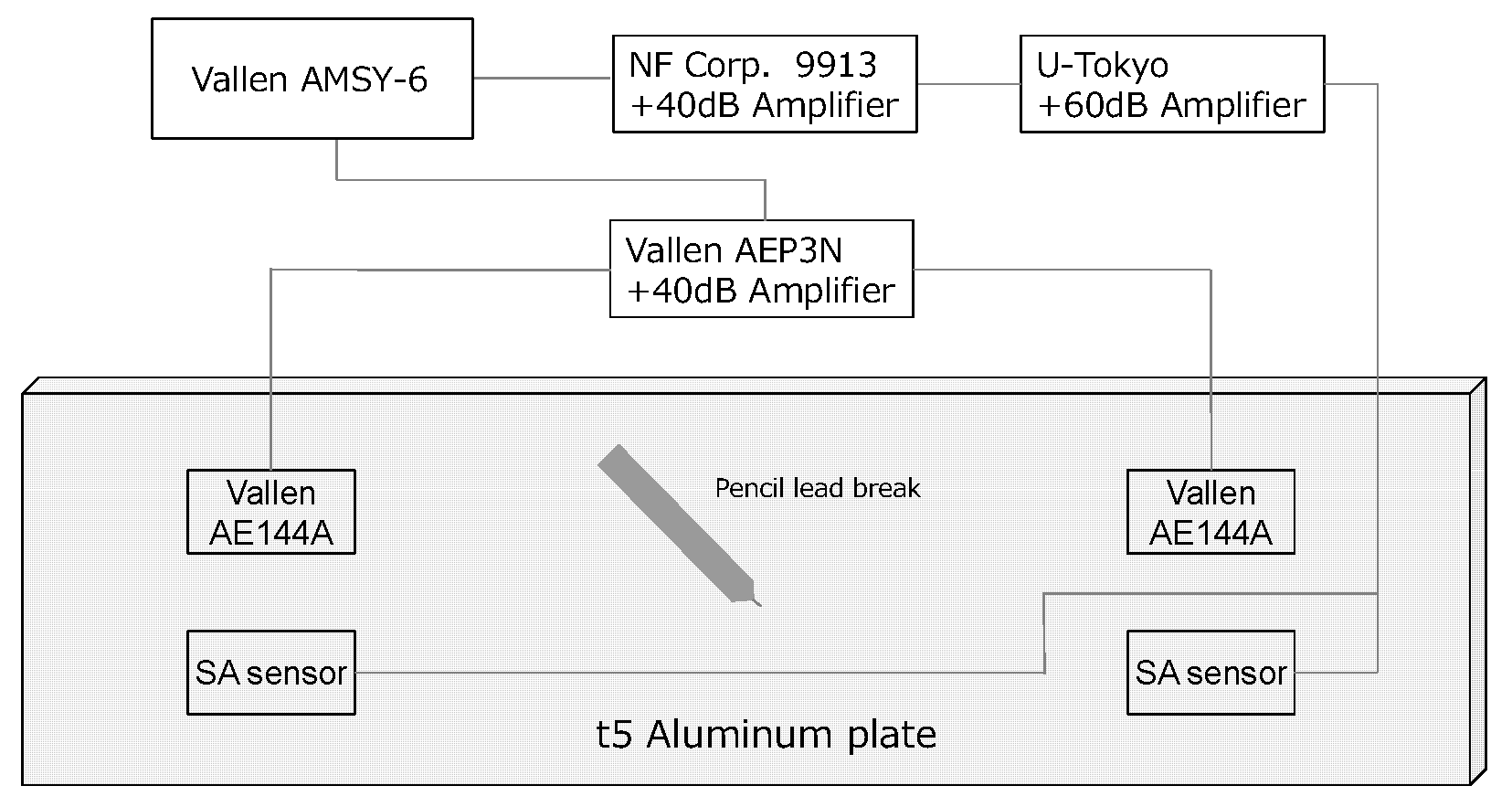
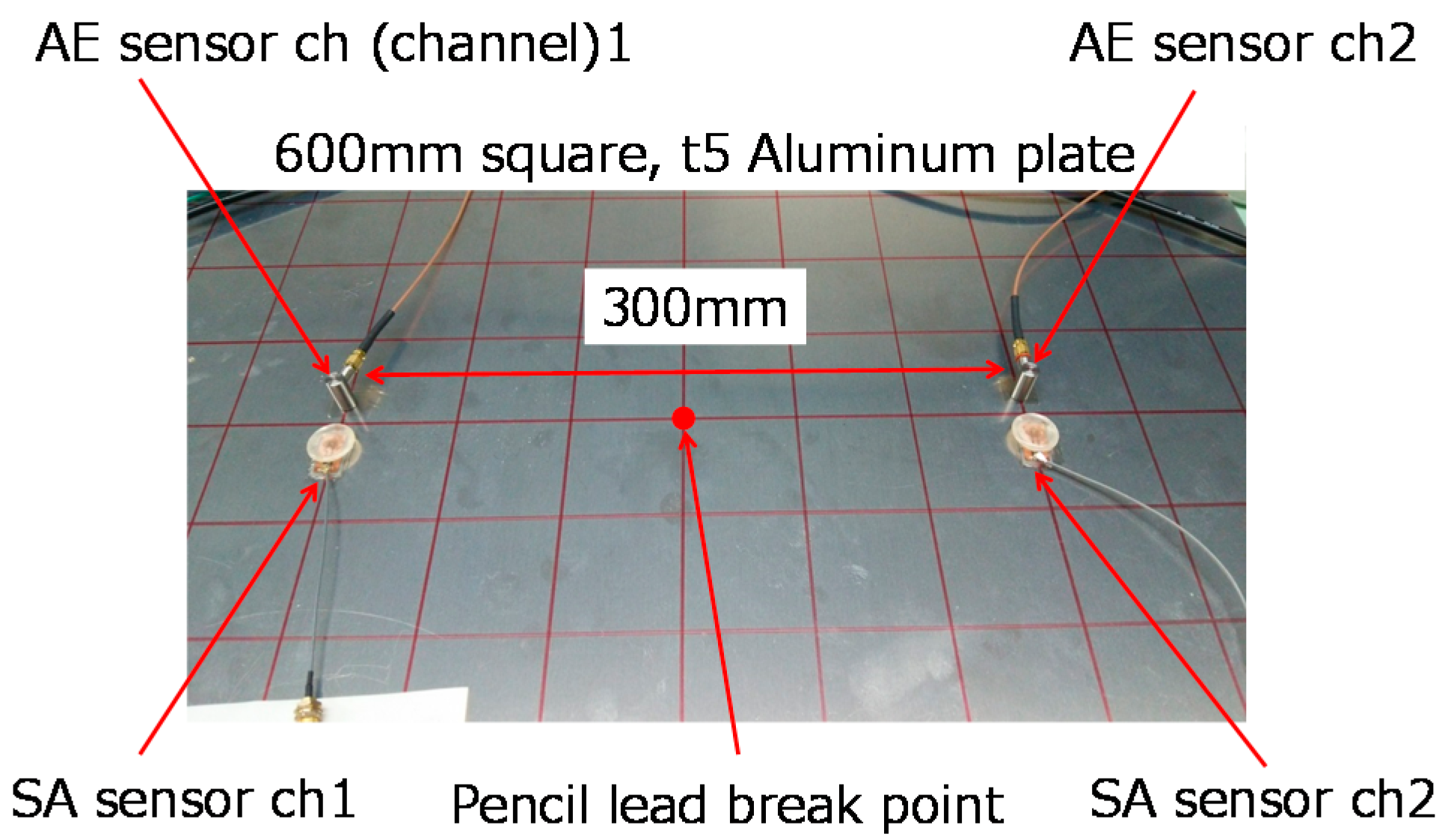
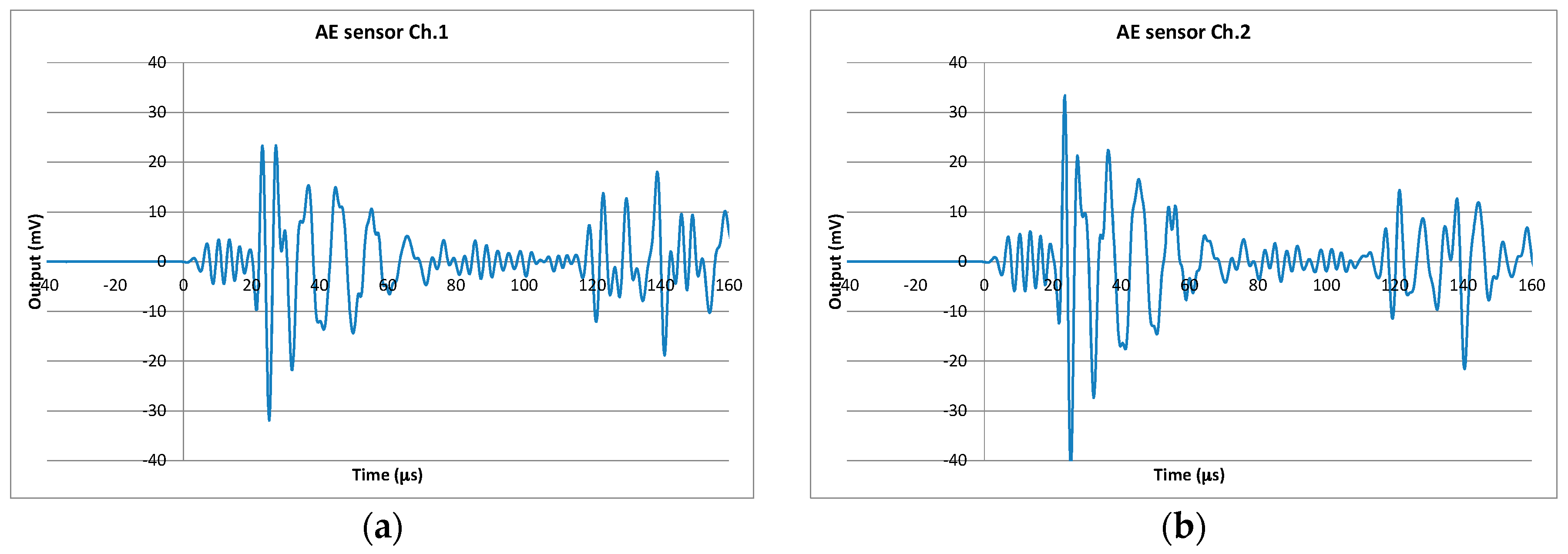


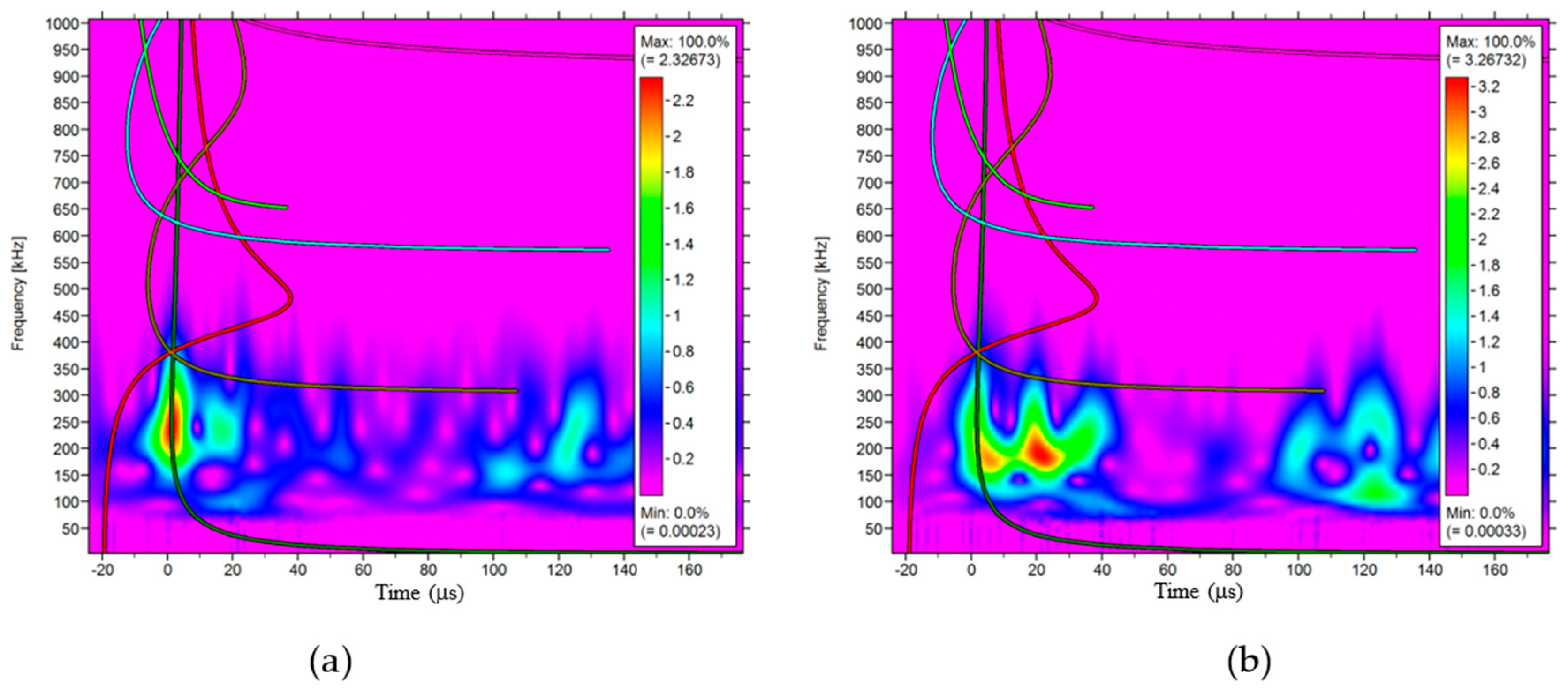
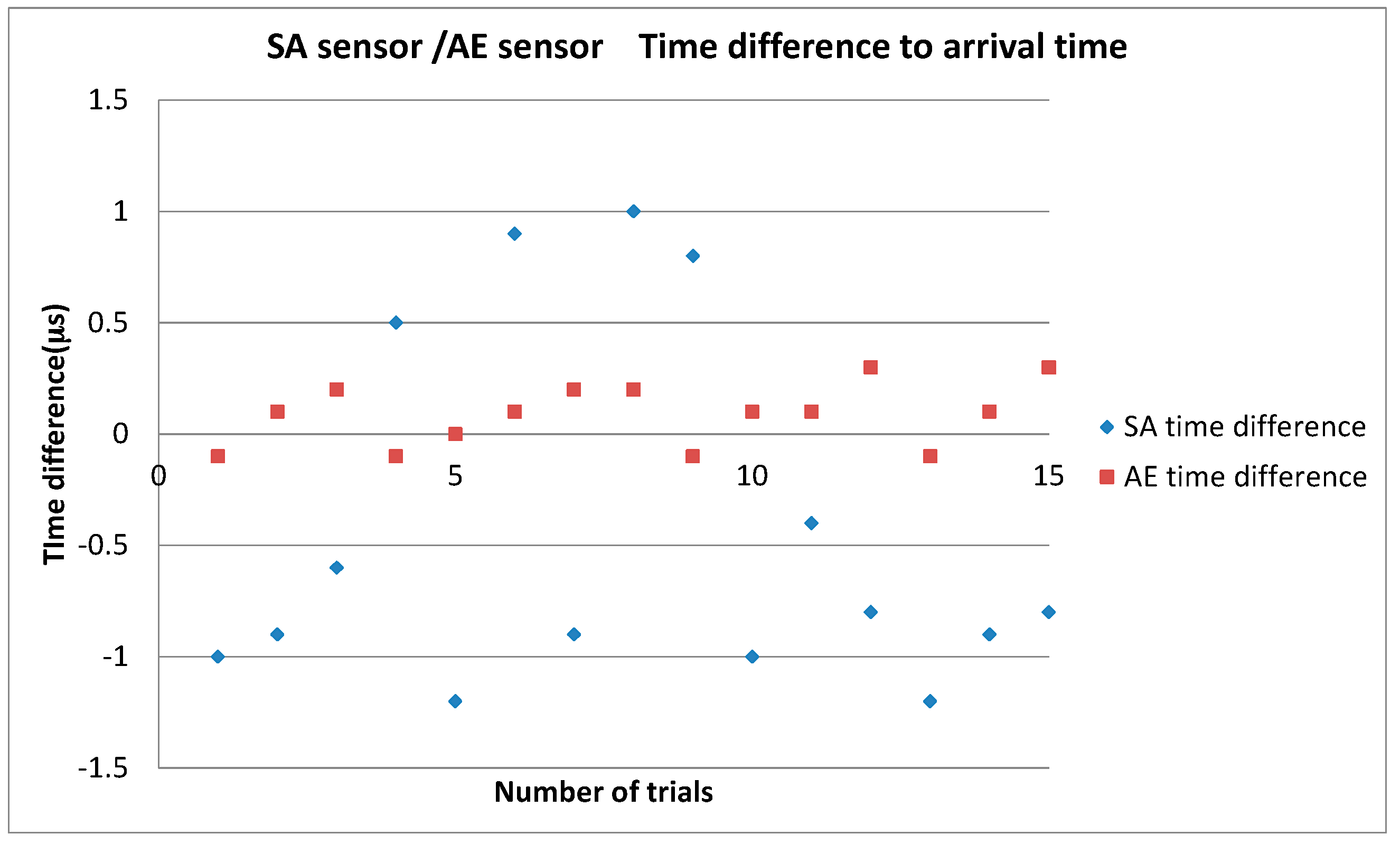
© 2017 by the authors. Licensee MDPI, Basel, Switzerland. This article is an open access article distributed under the terms and conditions of the Creative Commons Attribution (CC BY) license (http://creativecommons.org/licenses/by/4.0/).
Share and Cite
Omori, T.; Usui, T.; Watabe, K.; Nguyen, M.-D.; Matsumoto, K.; Shimoyama, I. Elastic Wave Measurement Using a MEMS AE Sensor. Appl. Sci. 2017, 7, 737. https://doi.org/10.3390/app7070737
Omori T, Usui T, Watabe K, Nguyen M-D, Matsumoto K, Shimoyama I. Elastic Wave Measurement Using a MEMS AE Sensor. Applied Sciences. 2017; 7(7):737. https://doi.org/10.3390/app7070737
Chicago/Turabian StyleOmori, Takahiro, Takashi Usui, Kazuo Watabe, Minh-Dung Nguyen, Kiyoshi Matsumoto, and Isao Shimoyama. 2017. "Elastic Wave Measurement Using a MEMS AE Sensor" Applied Sciences 7, no. 7: 737. https://doi.org/10.3390/app7070737



